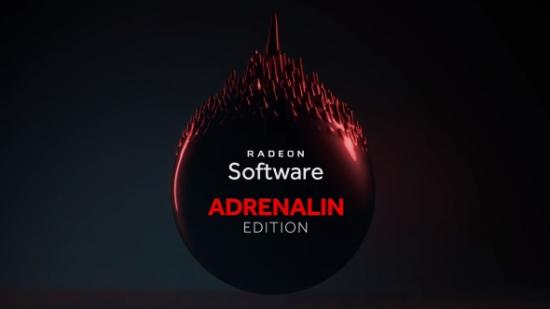The AMD Radeon Adrenalin update is here, giving the Radeon GPU software it’s now customary yearly update. Don’t worry, they haven’t abandoned the whole Radeon-means-red stuff, moving on from the Crimson and Crimson ReLive releases we’ve now got a software update named after a deep red rose. We’ve also got a mobile app and a rather sexy game overlay too.
Check out our pick of the best graphics cards available today.
We’re not talking about a Radeon Crimson ReLive Redux release – thankfully that was just a wee joke from the AMD Vega launch that seemed to have gotten out of hand. It would have been a terrible name, “fire that marketing guy!” as AMD’s Sasa Marinkovic, head of software marketing at AMD said when we were introduced to the new Radeon Adrenalin.
Named after the Adrenalin rose, because AMD are already starting to run dry of cool-sounding shades of red (and no, they can’t use Ruby because someone else has already bagged that one), the new Radeon Software Adrenalin update is a mixture of little changes, some bigger updates, and a whole new slab of extra functionality.

The headline-grabbing features surround the accessibility of the powerful ReLive capture and streaming feature, which they introduced last year. The main one being the impressive-looking overlay which sits on top of your game and gives you access to a whole host of settings, capture, and performance metrics with which to play.
It allows you to screenshot, record, and stream your gameplay without having to alt-tab out of the action in the same way the much more basic original Crimson ReLive overlay did.
But it’s the instant, direct access to much of AMD’s graphics enhancement technology, such as Radeon Chill and FreeSync, that makes the Adrenalin overlay so useful. It’s all saved on a per-game basis, so any games that don’t play nice with FreeSync (there are a few) or ones that you don’t want to limit with Chill, can be set up with their own profile in just a few clicks. It’s far easier than remembering to dig into the Radeon Setttings desktop app before you dive into a game.
Radeon Chill, the algorithmic feature which monitors what’s happening in-game and limits frame rate, and therefore power draw, when it’s not needed has itself had a rather big update. It used to operate on a whitelist basis, where compatible games were added, allowing you to enable Chill. Now it’s switched around so that every game is deemed compatible unless it’s added to a blacklist. AMD have been working their way through a host of games and so far the blacklist remains empty.
Chill is an impressive, borderline invisible bit of software which can really save on power and also heat generation. It really ought to be on by default but, as an AMD rep explained, people simply don’t like stuff enabled by default.
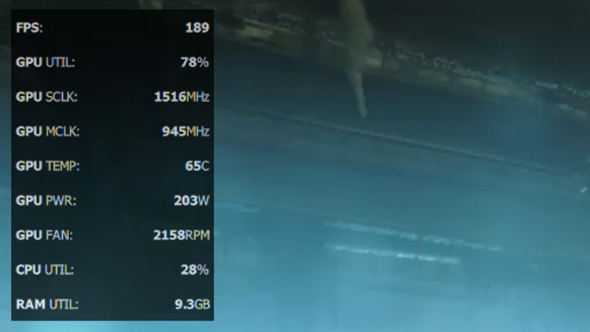
For us hardware nerds it also gives us access to a bunch of performance metrics too. These can be overlayed themselves during gameplay, with or without them showing up in any captured footage you record. You can also log the performance too, giving you figures for GPU, CPU, and RAM utilisation, temperature, GPU and memory clockspeeds, GPU power, fan speed, and yes, that all-important frames per second figure. You can set the sampling interval as well, from one to ten seconds.
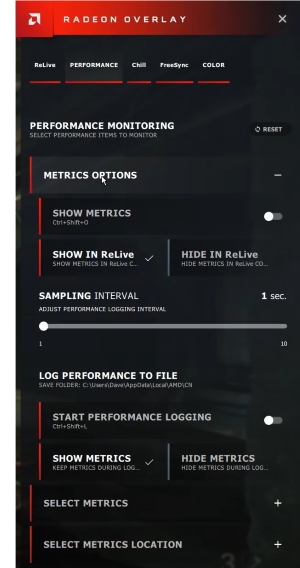
Unfortunately the only thing which doesn’t work on a per-game basis is the colouring option. With the Radeon Adrenalin overlay you can adjust the colour (sorry, color) settings and see instantly how it will look in-game. Sadly this is a global setting, so if you happen to like a pink hue to your Wolfenstein gibbing that will stick around once you withdraw to the comparative safety of your Windows desktop.
We’ve tested the overlay in pre-release form and it’s been remarkably stable for the most part. We’ve had a few issues where it wouldn’t function in certain games, and only a single crash. But the capture is solid, barely seems to impact on gaming frame rates, and the performance metrics collection is going to be seriously helpful for us.
AMD have really moved forward with the functionality and stability of their software releases since Catalyst Omega, and it shows.
The new overlay also has an off-site companion in the shape of the AMD Link app. This is an Android or iOS application which ties into your PC (so long as both it and the phone are connected to the same network) and gives you both insight and control away from your PC.
The connection is super-easy and just requires you to point the app at a QR code and the rest is done for you. Then you’ll have real-time monitoring of your system (mostly on the graphics side, obvs.), whether you want to have an overview or a constant single-screen look at the FPS or GPU clockspeed.
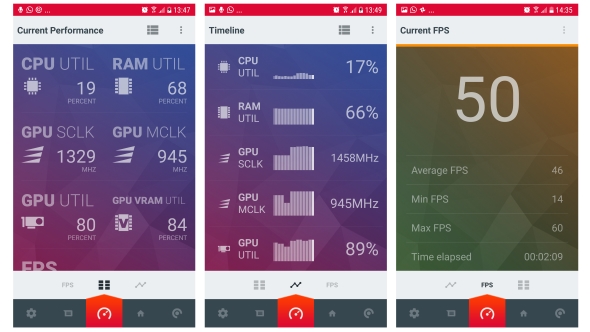
The app will also allow you to externally control capture of video and screenshots, as well as starting a broadcast with a single tap. By default the app stops the mobile device’s screen from going to sleep, which means you can have it sat by your keyboard with a big green button waiting to be tapped to start your stream or capture.
Who wants to remember the complicated digital gymnastics needed to nail the various shortcuts?
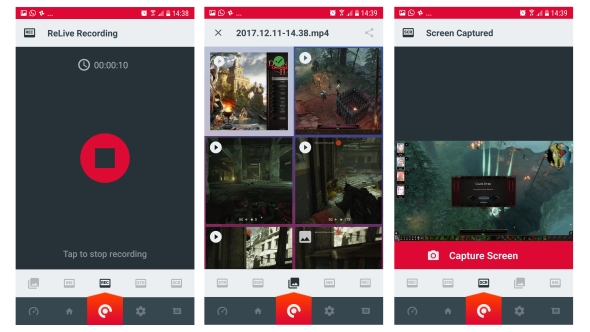
It’s most definitely a gen one version of the application, and you can see where AMD can go from here – adding in customisable full-screen buttons, and streamed playback from your library of your files, for example. But it’s not without it’s issues. I had to continually reconnect the app as it wouldn’t automatically sync when it was opened, and honestly it’s more for the streamer than anyone else.
But this all speaks to AMD’s desire to work with the huge streaming community, and not just the casual streamers either. They’ve entered a partnership with Stage TEN to use the ReLive output as a stream in their browser-based live mixer. It’s a cloud-based setup which essentially works like a mixing desk, letting you flow pre-recorded and live streaming content together.
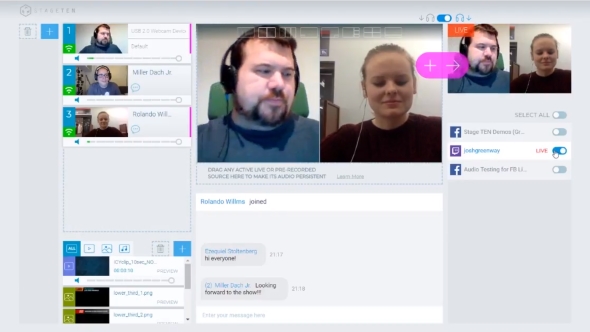
They’ve also enabled live chat integration for your ReLive stream, so you can see the horrendous abuse you’re getting for your gaming skills overlayed onto your screen. Like all good interweb chats it’s a one-way thing so you can’t actually respond to the torrent of hate that will come your way from the Twitch, Facebook, Mixer, or YouTube chat integration.
AMD have also split the audio tracks for voice and game, a much-needed feature of ReLive for streamers, and have brought in chroma key support for transparencies and borderless region capture support too. Most importantly though, AMD have also cut down the performance overheads associated with the ReLive capture, which means streamers’ rigs aren’t going to be as likely to drop frames as a result of the stream.
The update is out now, and anyone with a Radeon graphics card should absolutely get themselves over to AMD’s download site and get the Adrenalin installed. If you’re an AMD gamer, and/or hardware nerd it’s a joy, highlighting and making the impressive Radeon tech more accessible, and if you’re a streamer it’s a must.
The app, well, that’s going to be more of a niche offering.
